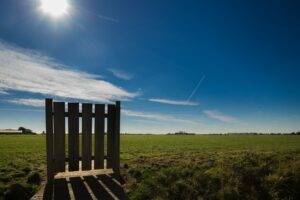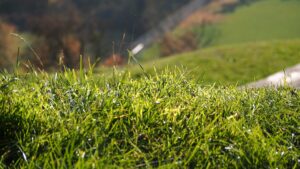Australian native grasses are a fantastic option when you’re looking to cover an area of your garden. More and more Australians are turning to these cheap, hardy, and good-looking grasses, and it’s not surprising.
Why Native Grasses Are a Great Option
Native grasses tend to be cheaper than imported ones and, unsurprisingly, cope with our various climates better. Not to mention they’re the more sustainable and eco-friendly option.
Most native species of grass don’t have “runners.” This is a wonderful thing for controlling your lawn. With natives, you’ll never find yourself gritting through your teeth as you try to wrench little lawn runners out of your veggie patch! If you’ve ever thought, ” love my lawn but I wish it would just stay where I want it to and not spread everywhere”, natives are definitely for you.
The Downfall of Native Grasses
The only area where native grasses won’t perform as well as an imported variety is in a heavy-usage lawn. If you’re looking to create a soccer pitch or a garden path, you’ll need to look elsewhere. But if you’re aiming for a nice green space to make your neighbours jealous, there’ll be a variety for you.
You can always consider creating a path through your patch of native lawn if your heart is set on a native but there is a thoroughfare through the garden.
The lack of runners can mean that without proper maintenance the lawn can get “clumpy.” Easily fixed though! Simply let the grass set seed once a year and you’ll have that lovely springiness that a native lawn brings.
Choosing Your Native Grass
To choose your lawn you need to consider the following:
How much sun does the patch get?
What is the soil type?
How is the drainage?
How often will it be watered?
Consult McKay’s if you’re unsure which variety is best for you. Depending on which region you are in, there are grasses which will out-perform others. From Meadow Grass to Windmill Grass to Kangaroo Grass to Wallaby Grass – there’s something for everyone!
Preparing Your Patch
So you’ve chosen your native grass seed – great! Let’s get the patch of ground ready for those seeds to get a good start.
If there is an existing lawn spray it with herbicide. Two applications will be necessary to properly kill all the old turf.
Aerate any compacted soil with a pitch fork, level out the area, and apply a native garden mix to fill any holes and top dress.
Make sure there’s no weeds lurking anywhere – we don’t want them stealing precious nutrients or ruining our pure native turf.
You’re ready to go!
Planting Your Native Grass
Planting really needs to be done in spring. Native grasses grow during summer and lay dormant in winter (but stay gloriously green – it’s another of their many benefits!).
Spread the seed evenly. Mixing the seed with sand or dry soil can help achieve this more easily. Only plant the seeds as deep as themselves – no covering or mulching. If you really need to hold the seed down you can sprinkle a light sand or native garden mix layer over. The watering process should hold the seeds in place.
The moment you see a weed pull it out! They’ll over-take your lawn seeds and inhibit growth.
Until germination the seeds will need to be watered well. It is essential that you water the little tackers gently though, as you want to avoid dislodging the seeds. Once germination starts, ease off the watering until the lawn is established.
You’re looking at around 8 weeks before the seeds are fully established, longer if you plant in winter (but don’t plant in winter!).
Maintenance
Frequency of mowing will depend on the native grass variety of your lawn. As natives only grow in summer you should only have to mow in the warmer months.
Use the highest setting of your mower – Aussie types don’t like to be cut too short – and leave the catcher off sometimes to help weed control.
Mowing the grass when it’s seeding allows the seeds to fall and germinate. This is a great thing as they’ll fill any gaps and keep your lawn lush and springy.
Native grasses aren’t thirsty and rarely need fertilising. Only mowing in summer, infrequent watering, and never fertilising? Is this a dream lawn!? Yes, yes it is…



